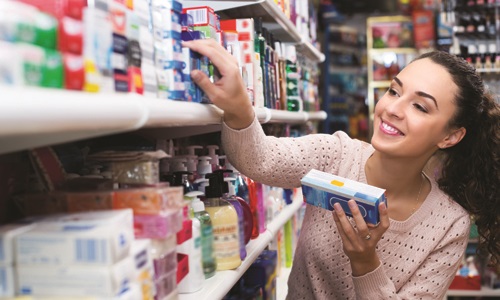Spring cleaning isn’t just for your home. Give your vacuum cleaner a break, and consider these healthy tips to freshen up your mouth.
5 spring tips for your teeth
1. Give your mouth a thorough cleaning.
This season, try kicking your dental hygiene game up a notch or two.
• Gargle before brushing. Dissolve a tablespoon of salt in a cup of warm water. Swishing and gargling with salty water before you brush helps loosen up plaque and bits of food. Plus, it can even lower your chance of developing a late-season cold or flu.
• Try a tongue scraper. This handy tool reaches the back of your tongue to remove that gross layer of bacteria.
• Set your timer. You think you brush for two minutes, but do you really? Track the seconds with a stopwatch to be sure. Try to spend at least 30 seconds on each quadrant of your mouth.
2. Book your next dental cleaning.
As essential as they are, your humble toothbrush and floss are no match for a dental hygienist’s tools. A professional dental cleaning can remove hardened plaque, called tartar, before it develops into decay. What’s more, your teeth will feel smoother and look whiter than ever. Call your dental office to schedule your next cleaning.
3. Toss out old supplies.
If it’s been more than three months, it’s time to say goodbye. Collect any old toothbrushes or electric toothbrush heads and toss them in the trash. When the bristles start to fray, your toothbrush just won’t be as effective.
Likewise, you can toss your tongue scraper after several months or any signs of wear.
And while you’re at it, take a close look at your bathroom cabinets and drawers. When did you last check your toothpaste’s expiration date? Surprisingly, toothpaste, like milk, can “go bad.” After sitting in the cabinet for too many years, toothpaste can start to break down. As the ingredients separate, the active ingredient fluoride can lose its effectiveness. The texture and flavor of your toothpaste can also be affected.
4. Stock up on dental products.
Now that your bathroom cabinet has been cleared out, it’s time to hit the drugstore for new toothbrushes, toothpaste and dental floss. No more excuses or procrastination!
Look for a soft-bristled toothbrush, fluoride toothpaste and whichever floss is comfortable for you to use.
5. Rethink mouthwash.
Sure, your mouthwash may loosen food debris and leave your mouth feeling minty fresh, but it may not do much more than that. Unlike a toothbrush and toothpaste, mouthwash alone doesn’t remove plaque.
And not all mouthwash is created equal. Check your label to see what exactly is in your mouthwash.
• Fluoride: A fluoride rinse is a great way to boost your fluoride intake, especially if you don’t drink fluoridated water. This key mineral can strengthen your teeth to prevent cavities.
• Alcohol: Steer away from alcohol-based mouthwashes. This type of mouthwash can dry out your mouth and may be linked to oral cancer when used regularly.
• Sodium lauryl sulfate (SLS): This detergent agent is sometimes added to mouthwash and toothpaste to make it foam. But that’s not all it does. Research has also found a potential link between SLS and painful or frequent canker sores. If you’re prone to canker sores, consider an SLS-free mouthwash.
Never skip flossing again
With these tips to stay on track, there’ll be no need to disappoint your dentist.
If there’s a flu shot, shouldn’t there be a cavity shot?
See how scientists are working on a vaccine for dental decay.
Drink to your health
Got water? This vital drink can boost dental health in four surprising ways.














